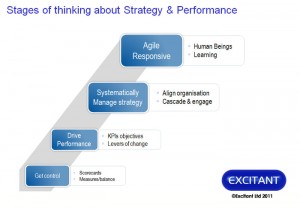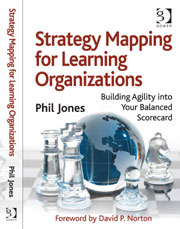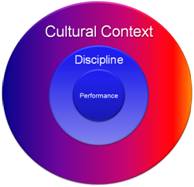Here are over 120 articles about how to make your modern balanced scorecard a success. I have created this practical guide to share good practice and to help organisations choose, design, implement and operate a successful balanced scorecard approach. This is a structured guide to the many balanced scorecard articles that I have written and updated over the years.
This article is divided into major topics, that link to the many more detailed articles. The topics cover the major types of balanced scorecard and the areas of choice, design, implementation and use.

They cover
- Why am I giving away all this information and experience? And what credibility does it have?
- Understanding the language and different types of balanced scorecard
- Making your balanced scorecard work: Good design principles
- Specific balanced scorecard design topics (eg cause and effect, perspectives, …)
- The missing piece: the culture of performance
- Measures and KPIS: Choosing designing and using
- Your balanced scorecard project: Making it a success
- Using balanced scorecard in specific circumstances. (eg NFP, environmental, risk, lean, outcomes, partnerships and steering wheels)
- About Fourth Generation Strategic Balanced Scorecards
- Related resources: Strategy, performance management, communicating strategy, culture change and decision making
Follow the links above or explore the topic areas that link to more detailed pages and articles. If you are looking for something specific, you can use the search tool at the top of the page. If you are already familiar with Balanced Scorecards, and want to bring yours up to date, then take a look at our Fourth Generation Strategic Balanced Scorecard approach.
1. Why am I giving away so much Balanced Scorecard advice and information?
As you read this page, you might have three questions:

- Why is all this balanced scorecard advice being given away for free?
- And what experience, credentials and credibility does the author have?
- If this is so useful, do I really need balanced scorecard training?
The answers to these three questions are in this article: Balanced Scorecard advice: why give it away and what is my credibility. Whether you read that or not, below are a whole collection of articles and practical Modern Balanced Scorecard advice.
Please browse, explore and learn. More importantly, please apply.
2. Understanding the language and types of balanced scorecard
It is important to understand the different types and balanced scorecards and how they serve different purposes. Unfortunately, the use of the phrase ‘balanced scorecard’ is ambiguous and confusing. This is made worse, because a lot of nonsense is talked about the history of the Balanced Scorecard. These articles:
- Untangle the confusing language around different types of scorecards and balanced scorecards
- Provide an insider’s perspective on the history of the Balanced Scorecard approach
- Explain how different types and generations of balanced scorecard serve different management needs
There is a separate section for the language of measures, indicators, leading and lagging in the KPI section. [Link]
3. Making your balanced scorecard work: Good balanced scorecard design principles
If you want your balanced scorecard to work properly, you need to understand the underlying design thinking and principles. Miss these are you will most likely create problems. These articles provide insights into good balanced scorecard design principles. If you have problems with yours I provide an insight into the likely underlying causes in these three articles:
- Strategy Mapping 101: A popular video where I explain balanced scorecards and strategy maps.
- Modern Balanced Scorecard design principles: A guide to good design, implementation and use
- Common balanced scorecard problems: their underlying causes and solutions
By the way, be very careful asking for balanced scorecard templates. Its a common question, but it is the wrong question, that can lead you into all sorts of trouble.
4. Specific topics around Modern Balanced Scorecard design and implementation
This series of articles covers the most important design and implementation issues:

Balanced Scorecard perspectives and cause and effect: Understanding the perspectives in a balanced scorecard is fundamental to their correct use. The balanced scorecard perspectives create the cause and effect relationship that tells the story of the strategy. These articles look at the various perspectives, explain their use and help you avoid the most common mistakes when using balanced scorecard perspectives. Read Understanding and using balanced scorecard perspectives to create cause and effect
Strategy maps and strategy mapping. Strategy maps are central to strategic balanced scorecard design: That is why I wrote a book about strategy mapping. You can learn how to design and develop strategy maps in our guide to Strategy maps and strategy mapping:
Cascading balanced scorecards and organisational alignment: This series of articles covers how you design the cascade of a set of balanced scorecards, so you can align the whole organisation behind the strategy. The series covers: why you should not create a balanced scorecard for an organisation – and what you should do instead; designing the architecture and the cascade of strategy maps and balanced scorecards; aligning your people with your strategy; aligning programmes of change, projects and initiatives; and the wider alignment of budgets, investments, structures, and meetings. It also questions how you think about your organisation and how that can dramatically change how you think about designing, implementing and using strategy maps and balanced scorecards. Read Cascading balanced scorecards and organisational alignment
Ownership and buy-in to your balanced scorecard: Most so-called balanced scorecards are not balanced scorecards, they are scorecards. The design of measures and targets is often done poorly. We often fail to create ownership. Design and implementation is rarely treated as a change programme. Poor design and implementation ends up with poor operation. Read Creating buy-in and ownership to your balanced scorecard
Testing your balanced scorecard: This has two aspects

- Testing, before you start: We strongly recommend you test your strategy to see it it will make it easy to develop your strategic balanced scorecard. We have a simple test you can carry out to see if your strategy document describes how the strategy will be executed, or whether it describes “Strategy by hope and magic”. Try our simple “4 pen test” on your strategy document. It will take you about 5 minutes.
- Testing your existing balanced scorecard: here is a simple test of your existing balanced scorecard, to see if it is genuinely useful.
5. The culture of performance:
The focus is too often on measures and targets and scorecards, treating performance management as a technical tool. Quite often this leads to dysfunctional behaviour and gaming.
What is important is the culture of performance that we create: the behaviours, expectation and norms around performance management. There are two parts to this:

- Explicitly choosing your culture of performance and then ensuring how you design, implement and use the balanced scorecard to support that culture of performance.
- Treating the balanced scorecard approach as a social tool that should improve the quality of conversation, thinking, decision making and learning that matter. We ignore the social side of the performance management at our peril. The balanced scorecard is not a technical tool, it is a social tool.
Both these topics are closely related to treating balanced scorecard projects as cultural and behavioural change projects.
6. Measures and KPIs:
Having effective measures with which to make decisions, is fundamental to any balanced scorecard. How you choose and design those measures will ultimately determine the effectiveness of your balanced scorecard.
However, the choice process is not simply choosing measures. I have written a whole series of articles about good measure choice and design principles for balanced scorecards. They apply to all generations of balanced scorecard and they cover:
- Clarifying the language around measures.
- Understanding leading and lagging measures
- Why manage with measures, and the implications for measure choice and design
- Choosing and designing measures and KPIs
- Balanced Scorecard measure design problems and the culture of performance
- Why you should never do weightings across the measures on a balanced scorecard
You can access the series, by going to our dedicated page, Balanced Scorecard measures: Choosing effective KPIs.
7. Managing your project: making your balanced scorecard a success
This topic is about how to make your balanced scorecard project succeed, but first we need to look at why they might fail. First, I examine and expose the most common myths about “balanced scorecard project failure” and the reasons for these misleading myths and statistics. The myths and misleading statistics around “why balanced scorecards projects fail”
Then I explore the real reasons why a performance management or balanced scorecard project might fail. I also provide specific ways to ensure your balanced scorecard project will be successful. Ensure your balanced scorecard projects succeeds: five keys to success
8. Using Balanced scorecards in specific circumstances
This section provides links to various uses of the strategic balanced scorecard in specific applications. It is not an exhaustive list but does provides examples of the diversity of our work with clients. If you cannot find what you are looking for here, we can probably help. The articles in section 8, below, cover:
- Steering wheels, symbolic balanced scorecards and strategy maps
- Using Balanced scorecards in the Public Sector, Charities and Not for profit organisations and the balanced scorecard
- Outcome thinking and balanced scorecards
- Balanced scorecards and lean methods such as Hoshin Kanri
- Alliances, partnerships and the balanced scorecard
- Managing risk and the balanced scorecard
- Environmental balanced scorecards and sustainability
8.1. Steering wheels and Symbolic balanced scorecards
Very often we come across Steering wheels, symbolic balanced scorecards and symbolic strategy maps. These symbolic approaches can be really useful, or can be a dangerous simplification, depending how they were developed and are used. These two articles discuss
- Balanced scorecards and steering wheels: their use and the details that should lie beneath them
- Symbolic strategy maps: variations, uses and abuses
- Design the Strategy Map image carefully: Be aware how people read and interpret your strategy map
8.2. Balanced Scorecards in Not for Profit organisations and the public sector.

There is a lot of rubbish talked about the Balanced Scorecard in not for profit organisations and the public sector, with many claiming it does not work. If that is the case why do I have so many clients that have been charities, local authorities of even parts of central government? As they say, “Those who say it cannot be done, should not get in the way of those that are doing it”. Here are some useful guidelines if you are working on a balanced scorecard in a charity, not for profit, social enterprise or the public sector.
- Balanced Scorecards in charities, Not for Profit organisations and social enterprises
- Balanced Scorecards in the public sector and what goes wrong with them
- Balanced Scorecard in charities, NFP and social enterprise: Three common mistakes to avoid
8.3. Balanced scorecards and outcome thinking
If you are in an organisation that uses outcomes, outcome thinking, or outcome models, then you need to read our extensive paper on Using the mis-understood outcome model successfully. This article with also help you Outcome thinking and the balanced scorecard: Making them work well together. This outcome model has been used very successfully by some of our clients in the Water Industry regulated by OFWAT. If you are in an industry, whose regulator wants you to develop effective outcomes, and outcome thinking, then have a read of these two articles I wrote when OFWAT first introduced Outcomes (badly).
- OFWAT outcomes and outcome thinking: be careful
- OFWAT and outcome thinking – dangerous examples that will cause problems for the water industry
8.4. Balanced Scorecards and lean methods such as Hoshin Kanri
Balanced scorecards are rarely used in isolation. They usually co-exist alongside other performance management approaches. It is quite common to find it alongside a lean approach. So have a read of Using balanced scorecards alongside other approaches such as lean and Hoshin Kanri [link]
8.5. Balanced Scorecards for alliances and partnerships
We have created some specific strategy maps and balanced scorecard for organisations working in alliances and partnerships. Here is a brief article about balanced scorecards for alliances and partnerships, but contact us for more specific detail.
8.6. Using Balanced Scorecards to manage risk.
There is a simplistic approach to this and a more thoughtful one where you consider the classes of risk that are managed in various ways, and how your approach to the balanced scorecard will manage some of those risks. This series of articles will give you insights into how to ensure your balanced scorecard and risk management approaches work well together.
8.7. Environmental balanced scorecards and sustainability
If you are concerned about tracking, improving and influencing your environmental impact then, building natural capital and environmental components into your balanced scorecard is a natural step. I have been helping clients do this since 1998. Nowadays, what was Triple Bottom Line accounting is now more often known as natural capital accounting or fic capitals accounting. We are still helping clients develop and implement this approach in their decision making, strategies and reporting today.
Here is a paper I wrote some years ago, but whose principles are still relevant. The paper describes the underlying thinking and approach to developing an environmental balanced scorecard and building environmental thinking into your performance management.
9. The fourth Generation Strategic Balanced Scorecard approach
If you are looking for a truly modern Balanced Scorecard, this is Excitant’s Fourth Generation Strategic Balanced Scorecard Approach
- Understanding the Fourth Generation Strategic Balanced scorecard approach.
- The paradigm shifts that lead to the Excitant Fourth Generation Strategic Balanced Scorecard approach
- Why I believe performance management does not exist and how to think about what replaces it: a focus on the wider decision making process.
If you would like your organisation to have a modern balanced Scorecard or Fourth Generation Strategic Balanced Scorecard Approach, then here are some Balanced Scorecard training options, or contact us.
Further Topics that may help you
This page, and all the articles associated with it, were created to help people better understand this topic. Our work with clients has led us to publish nearly 400 articles & case studies, divided into closely related topics (Zones).
Why so many articles? We have a simple view: that sharing our experiences, explaining many of topics clearly, and educating people is a good thing. That is why we give so much material away. It might not bring in consultancy engagements, but it helps people avoid mistakes, and that does matter. If you have found this useful, have a browse through our other zones:
- Strategy: Our introduction to understanding strategy, its language, strategic thinking, development and making strategy happen. The Strategy Zone. Supported by four further zones:
- Make good decisions, execute them well and learn quickly in The Decision Improvement Zone.
- Manage Culture change: Does your strategy require cultural and behavioural change? Learn how in The Culture & Behaviour Change Zone.
- Communicating Strategy: Want to communicate and socialise your strategy better? The Communicating & Socialising Strategy Zone
- The 4G Strategic Balanced Scorecard: An approach to managing strategy, our organisations and our people, designed for today’s challenging organisational context The 4G Strategic Balanced Scorecard Zone
- Wider issues of Performance Management and earlier Balanced Scorecard approaches:
- Performance Management: Diagnose problems in various types of performance management systems, and understand how our beliefs influence our approach in The Performance Management Zone
- Modern Balanced Scorecards : Understand how earlier generations of balanced scorecards should work, (from someone who worked with Norton & Kaplan) The Modern Balanced Scorecard Zone.
- Paradigm Shift: The context of our organisations continues to change, affecting how we think about our organisations, and how we manage. Explore the shifts and implications, in The Paradigm Shift Zone.
Of course, there is another way to get help: by using the Contact Us form below, or give us a call.

